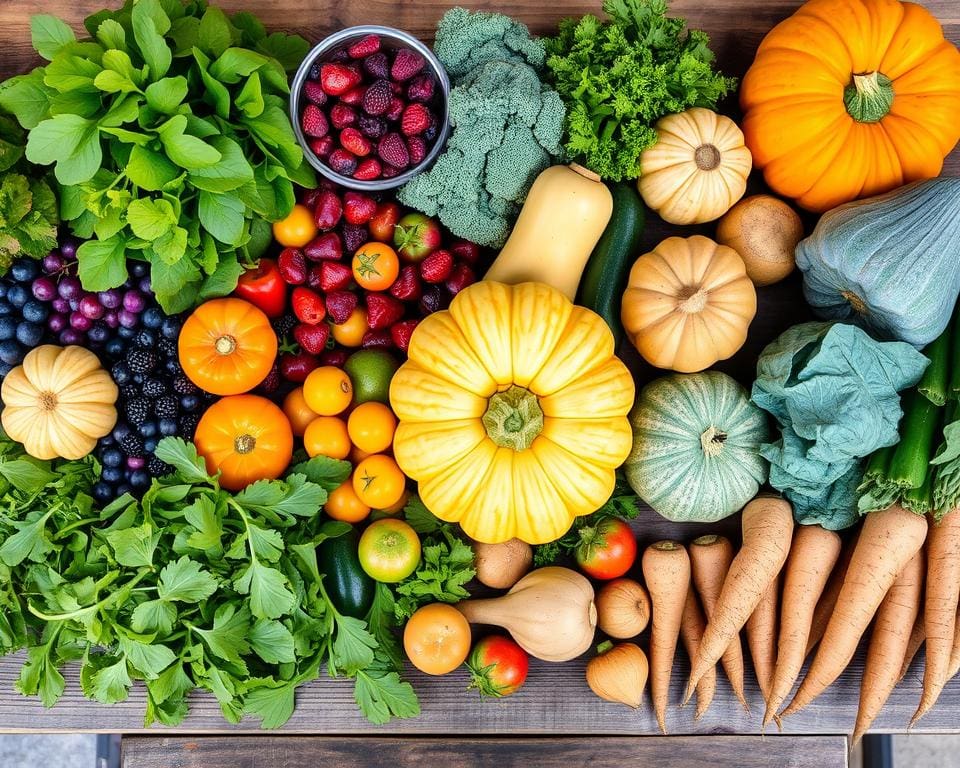In today’s fast-paced world, the concept of Seasonal Eating for Peak Nutrition represents a return to nature’s rhythm. By choosing to consume fresh produce that aligns with the seasons, individuals not only enhance their own health but also support their local communities and the environment. Seasonal foods are picked at their peak ripeness, offering superior flavor and higher nutrient density compared to out-of-season varieties. Research from the USDA highlights the advantages of incorporating seasonal foods into our diets, making them a key component of healthy eating. This holistic approach encourages a diverse range of nutrients throughout the year, ultimately fostering better health outcomes.
The Importance of Eating Seasonally
Eating with the seasons not only enhances our taste buds but also offers various advantages that resonate across health, community, and the environment. Seasonal foods provide a wealth of nutrition benefits, making it easier to maintain a balanced diet rich in essential vitamins and minerals. Choosing local ingredients ensures that produce is picked at its peak ripeness, which enhances flavor and nutrient density.
Health Benefits of Seasonal Foods
Seasonal foods often hold higher nutritional value compared to those consumed out of season. Fruits and vegetables harvested in their natural growing cycle typically boast more vitamins, minerals, and antioxidants. Fresh strawberries in spring or vibrant squash in the fall deliver optimal nutrition benefits, supporting overall wellbeing.
Impact on Local Communities and Farmers
By selecting seasonal produce, consumers contribute to local economies and foster connections with community farmers. Supporting farm-to-table initiatives not only promotes sustainable agriculture but also cultivates a sense of belonging. Local markets thrive when consumers prioritize local ingredients, strengthening relationships between producers and the community.
Environmental Benefits of Seasonal Eating
Eating seasonally has a positive impact on the environment. Local ingredients have a smaller carbon footprint due to decreased transportation emissions. Fewer miles traveled from the farm to the table means reduced pollution and a healthier planet. By embracing seasonal eating, individuals play an essential role in promoting environmental sustainability.

Seasonal Eating for Peak Nutrition
Understanding the variations in nutritional value of foods throughout the seasons can greatly enhance one’s approach to healthy eating. Each season brings a diverse array of fresh produce, allowing individuals to maximize the nutrition benefits of their diet. For instance, leafy greens such as spinach have heightened nutrient density during the cooler months, while vibrant summer tomatoes are packed with antioxidants and vitamin C at their peak.
Understanding Nutritional Value Across Seasons
Different fruits and vegetables provide unique health benefits as they come into season. Emphasizing seasonal choices ensures consumption of produce at its prime, resulting in improved flavor and superior nutrition. For example, in winter, root vegetables like carrots and potatoes become a staple, loaded with essential vitamins. By recognizing these seasonal shifts, a more tailored and healthful diet is achievable.
Comparative Analysis: Fresh Produce vs. Processed Foods
When contrasting fresh produce with processed options, the advantages of choosing seasonal fruits and vegetables become evident. Processed foods often undergo transformations that strip them of essential nutrients. The Academy of Nutrition and Dietetics underscores that diets rich in fresh produce correlate with healthier outcomes, including lower rates of chronic diseases. By prioritizing fresh, seasonal choices, individuals can significantly enhance their overall well-being and health.
Embracing Seasonal Fruits and Vegetables
Integrating seasonal fruits and vegetables into your diet can transform your meals and elevate your healthy eating habits. Each season brings a unique variety of fresh produce, full of flavor, nutrients, and culinary opportunities. By choosing to embrace these seasonal options, you not only enjoy the best that nature has to offer but also support your local farmers and communities.
Spring Produce to Incorporate into Your Diet
As spring arrives, vibrant options like asparagus, peas, and radishes emerge, inviting you to enjoy their crisp textures and fresh tastes. These seasonal fruits and vegetables are not only delightful additions to salads but also packed with vitamins and minerals that enhance your well-being.
Summer’s Bounty: Fresh Fruits and Vegetables
During the summer months, the abundance of tomatoes, blueberries, and zucchini presents endless possibilities for delicious dishes. This season’s fresh produce is perfect for creating light meals or refreshing snacks. Including these juicy, nutrient-rich options in your diet can uplift your meals and offer essential vitamins essential for overall health.
Fall Harvest: Nourishing Seasonal Options
As autumn approaches, we see the heartier selections of pumpkins, apples, and root vegetables. These seasonal fruits and vegetables not only warm the soul but also nourish the body during cooler months. Utilizing them in wholesome recipes can create satisfying meals that support your health.
Winter Wonders: Nutrient-Packed Choices
In winter, robust options like kale, citrus fruits, and sweet potatoes shine brightly. Rich in antioxidants and essential nutrients, these seasonal produce items are particularly important for boosting immune health during the colder months. Incorporating these ingredients into your everyday meals ensures you remain energized and nourished all winter long.









